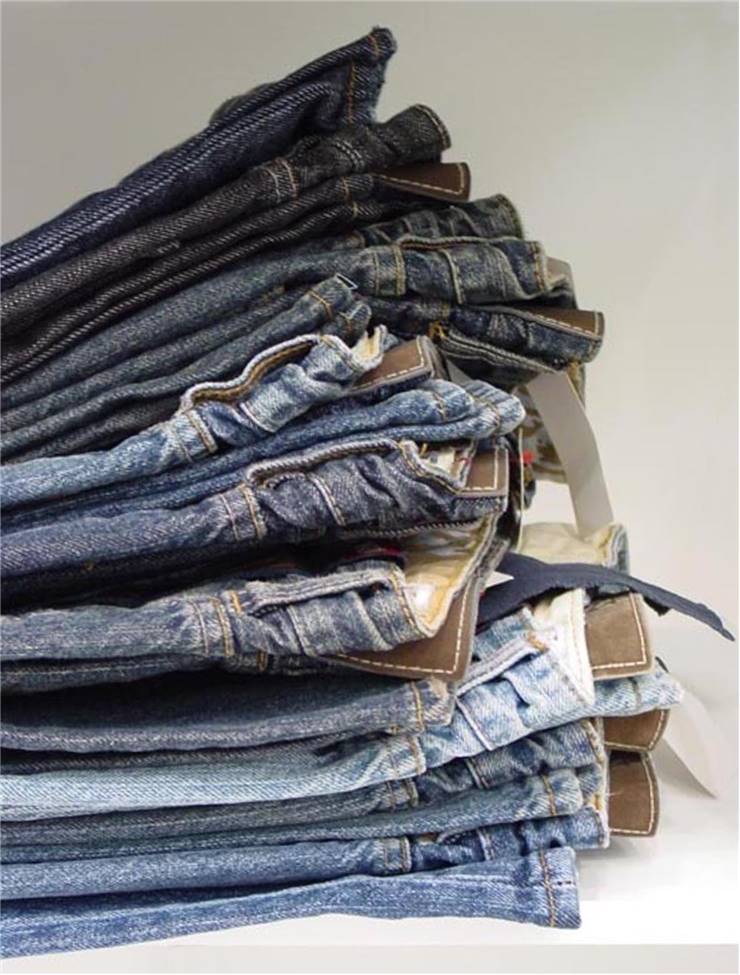Interesting Facts about Jeans
- The orange thread that Levi Strauss & Co. uses for the stitching of jeans is trademarked. It is used as a distinguishable feature and to match the color of copper rivets.
- Rivets are used on jeans to make them stronger, especially on pockets. In the beginning, Levi Strauss & Co. Placed rivets on all pockets, front, and back but people complained that rivets on the back pockets scratched saddles and chairs so at first, they covered them and then removed them altogether from the back
- Making of one pair of Levi 501s requires 37 separate sewing operations.
- The oldest known pair of Levi's jeans were found in 1997 and was 100 years old.
- The first jeans came in two styles, indigo blue, and brown cotton "duck."
- The first name for jeans was "waist overalls."
- The first label ever to be attached to a piece of a garment was a red flag that was sewed next to the back pocket of Levi Strauss’ jeans.
- Jeans were first colored with indigo because darker color better hides the dirt.
- In a time when the jeans were worn by factory workers, jeans for men had zippers on the front, but jeans for women had zippers on the side.
- A boutique in the New York East Village called “Limbo” was the first retailer to wash a new pair of jeans to get a used, worn effect. It became a new fashion hit.

- Twenty thousand tons of indigo are produced annually for dyeing of jeans.
- Name 'denim' comes from the name of a sturdy fabric called serge, initially made in Nîmes, France.
- From one bale of cotton, around 225 pairs of jeans can be made.
- Statistically, every American owns, on average, seven pairs of blue jeans.
- For a birthday of blue jeans is considered May 20, 1873, a date when Jacob Davis and Levi Strauss and Co. obtained a patent for blue jeans.
- Blue jeans were banned at certain places like schools, theaters, and restaurants in the ‘50s because they were seen as a form of rebellion against conformism.
- Over 50% of denim is produced in Asia, specifically China, India, and Bangladesh.
- To eliminate the shrinkage, most of the denim fabric is washed in water after coloring.
- Indigo that is used for the coloring of denim for jeans is a very old color that was made from plants but now is synthetically made.
- Stretch denim is a type of denim that is used for skinny jeans. It is not made from pure cotton, but it has an elastic component such as elastane.
- Only a few grams of the indigo is required for the coloring of each pair of blue jeans.
- Approximately 450 million pairs of jeans are sold in the United States every year.
- Blue jeans became popular for the first time outside of the United States, thanks to American Soldiers in World War II wore jeans when they were off-duty.
